Sweetgrass Baskets: A Family Tradition
Sweetgrass baskets originated in West African basketry traditions adapted to the new world. Slaves along the barrier islands of South Carolina harvested the local grasses, several of which were characterized by their sweet, pungent fragrance, as well as valued for their strength and malleability. Although cherished as highly artistic handcrafted objects today, these baskets were originally important utilitarian tools on the coastal plantations. For over 500 years, slaves and their descendants have been making traditional forms and new variations for everyday use, and more recently, for aesthetic refinement of this longstanding South Carolinian tradition. A true American folk tradition, these skills are most often passed from a mentor to an apprentice within families.
South Writ Large interviewed Dionne and Delores Jones about their role in carrying this traditional art form forward.
As the Jones sisters attest, “Everywhere you looked in Charleston in the 1980s, there were basket makers and sweetgrass baskets.” Encouraged by numerous friends, Dionne Jones learned the art form by observing techniques, studying designs, and replicating the handiwork of the traditional forms. According to the sisters, “[Dionne] was given a ‘nail bone,’ which is used in weaving, and [was] told how to use palmetto fronds to wrap the sweetgrass materials.” She then taught her mother, Zehia Delores Jones, and together they educated Delores. Traditionally, sweetgrass basket weaving is a family tradition passed down from generation to generation, but the Joneses are unique because Zehia learned how to make the baskets from her oldest daughter.
Once the three women mastered traditional styles of basket making, they ventured into making new, original forms. Inspired by their mother, who decided to go into business for herself to “become her own boss,” the sisters founded D’sweetgrass Basketry in 1993. Their stated vision is to “preserve one of the oldest African American art forms of basket weaving.” Continuing this Gullah tradition, which is a part of their heritage, enables the sisters to promulgate it into future. The sisters affirm that their family is “continuing on with this African tradition which uniquely represents Charleston. There are not many basket weavers left that are still creating these works of art, so we take pride that we are still sharing this part of our Gullah heritage to those around the world.” They are busy teaching new family members the art of basket weaving, including several of their nieces, one as young as six years old.
The sisters pride themselves on creating “Baskets with an Attitude,” which they imbue with their own “artistic flair.” In addition to serving as decorative works of art, the baskets can be used to store any number of items from bread and fruit to magazines and even casseroles. The sisters also point to their function as wall décor or traditional fanner baskets, which separate rice from shaft.
According to the sisters, “The materials that we use include sweetgrass, bulrush, pine-needle, and palmetto fronds. Sweetgrass and bulrush are collected out of the marsh areas and dried out to use in the sweetgrass baskets. The pine needles come from long-leaf pine trees and the palmetto fronds come from the palm trees seen throughout Charleston. We usually obtain our materials from men that harvest the materials for us.” In terms of the time that goes into making each sweetgrass basket, it “varies depending on the size and style. . . . A six-inch round basket would take 8 to 10 hours to make. Miniature baskets are tiny (anywhere from 1 inch to 3 inches) but are so small that they are tedious to make. They can take anywhere from 1.5 to 3 hours. Baskets that are extra large may take weeks to months to create. A Baby Bassinet Sweetgrass Basket usually takes 3 to 4 months to create. “For the Joneses, sweetgrass basket weaving has been a blessing for their family not only because it has enabled them to maintain their financial independence, but also because, according to Dionne and Delores, it has given them “the opportunity to make a living from what we love to do.” They continue, “It allows us to be creative while still sharing the history and Gullah culture. Sweetgrass basket weaving is a part of our family heritage so it has special meaning to us. It is important to observe this historic Gullah tradition because it is our heritage. It also allows us to connect with the past and our ancestors. In order to know the future, we must respect our past and be thankful for the skills and stories that our ancestors passed down to younger generations.” And, while once utilitarian, today sweetgrass baskets are valued for their authenticity, African American heritage, and their beauty.








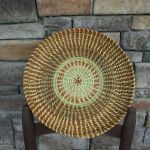
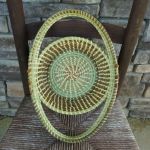
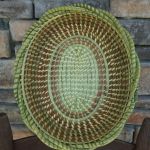

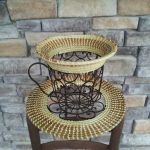
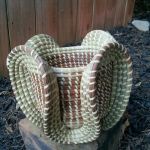
I grew up in SC and cherish the Swetgrass baskets passed down to me from my family who for generations lived in the low country. As a child we had so many I took them for granted but learned later to appreciate them as beautiful works of art. One of my favorites is very a very large basket in need of repair. Living in Virginia now I wonder if any of these craftswomen who carry on the traditions of the wonderful Gullah.
Thank you for this lovely article.
Part of my last sentence was deleted before posting. This is the complete sentence.
Living in Virginia now, I wonder if any of these craftswomen who carry on the traditions of the wonderful Gullah ever offer repairs.
Yes we do. Contact us at CharlestonChinaberry.com
Dionne
Hi Anne,
My sister and I love repairing baskets. Please feel free to contact me http://www.etsy.com/shop/Sweetgrassbasketry
Ms. Jones please call me regarding baskets.
904-613-7577
Renee
Hi Renee!
Please excuse the delay. We would be delighted to create a Sweetgrass basket for you. Feel free to contact us at http://www.etsy.com/shop/Sweetgrassbasketry
I bought a jet basket from a wonderful lady with your first name in 1999 almost 2000 because it was December 30. I have a picture with her but I keep on my dresser with my basket I am hoping you are the artist. We spoke a long time and I was dusting my picture and I was thinking about her and our talk about the meaning of the grasses. I could only afford a little one at the time,, but I always wanted to reach out to her and get another but her mailing information faded.
Hi!
We would love to add to your collection! We would love to see the item you purchased from 1999. Feel free to contact us at http://www.etsy.com/shop/Sweetgrassbasketry
JUST RECEIVED MY SWEETGRASS BASKET FROM D’SWEETGRASS BASKETRY. ALL THE WAY FROM NORTH CAROLINA UP AND OVER HERE TO OREGON. WHAT ARTISTRY. WHAT TALENT. THESE WONDERFUL ITEMS MADE FROM NATURE AND PROCESSED BY TALENTED HUMAN HANDS ARE JUST ONE ASPECT OF THE ARTISTIC BOUNTY THIS COUNTRY ENGENDERS. WE U.S. CITIZENS SHOULD BE, AND ARE VERY PROUD OF THIS HISTORIC BOUNTY. I BLESS THE HEARTS THAT SUPPORT THE HANDS THAT HAVE HELPED ADD ANOTHER HUMAN DIMENSION TO MY PERSONAL LIVING EXPERIENCE.
Hi!
Thank you so much! It was our honor creating the Sweetgrass basket for you! Be safe and I hope to add to your collection soon!
D’sweetgrass Basketry
Delores & Dionne
I recently purchased a sweetgrass basket at an estate sale. It is signed by Virginia and the last name is Co_tum. I would like to know what part of the country she was from. If you can help it would be appreciated.